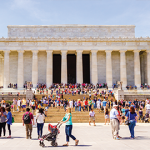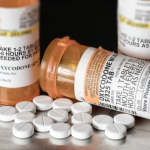Many places, not just museums, hold the potential to facilitate this experience, Koebner adds.
While art might work for some people, music or theater or other activities like gardening or walking could also have similar outcomes for people suffering from chronic pain, says Helen Chatterjee, a biology professor at University College London who wasn’t involved in the study.
“Psychological improvements in mood, self-esteem, confidence, quality of life, reductions in anxiety and stress, learning and acquisition of new skills, and development of social bonds, are shared across a range of different types of activities,” Chatterjee says by email. “The explanation for this is likely that the underlying mechanisms going on in the body are the same; in other words, all of these tasks are immersive, physically, cognitively and emotionally, and usually occur in social groups.”
Reference
- Koebner IJ, Fishman SM, Paterniti D, et al. The art of analgesia: A pilot study of art museum tours to decrease pain and social disconnection among individuals with chronic pain. Pain Med. 2018 Jul 24. doi: 10.1093/pm/pny148. [Epub ahead of print]

